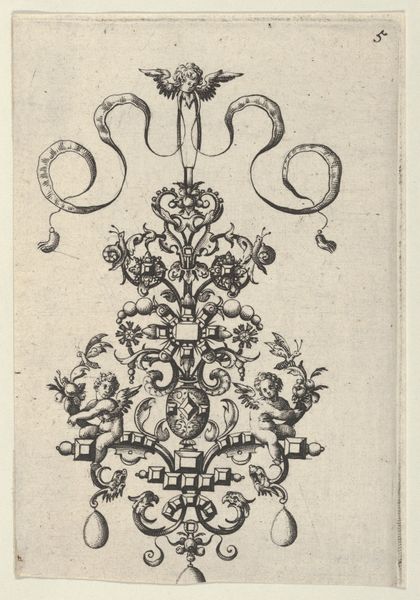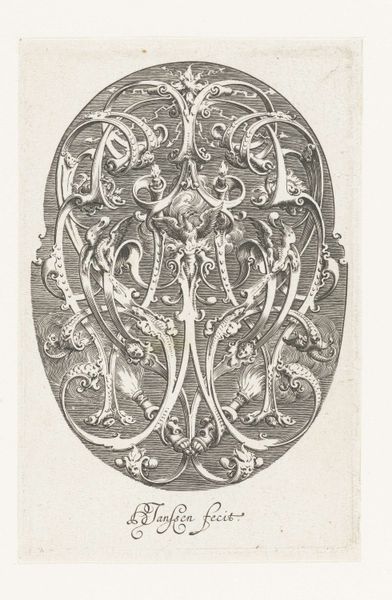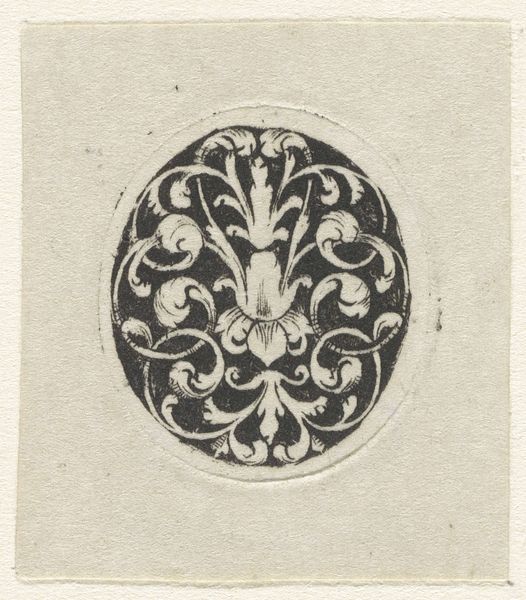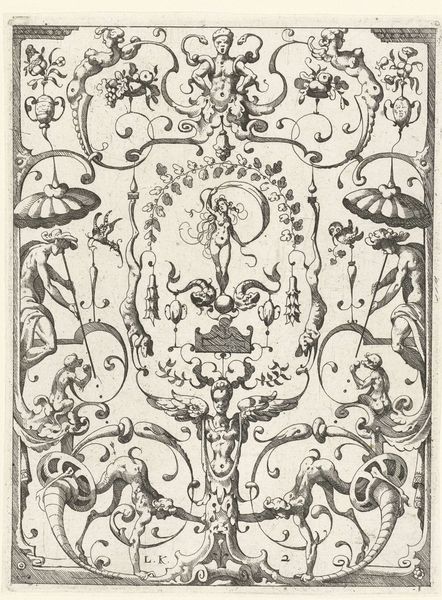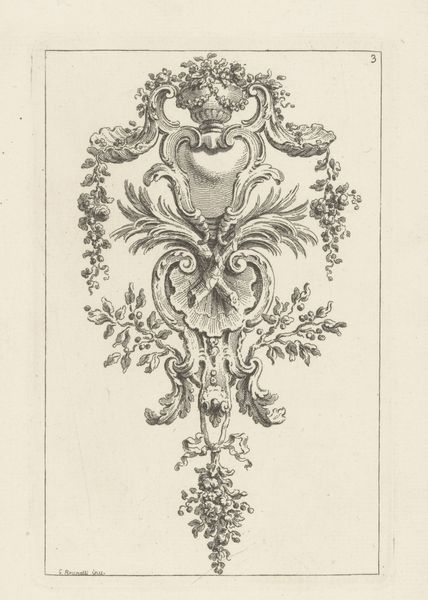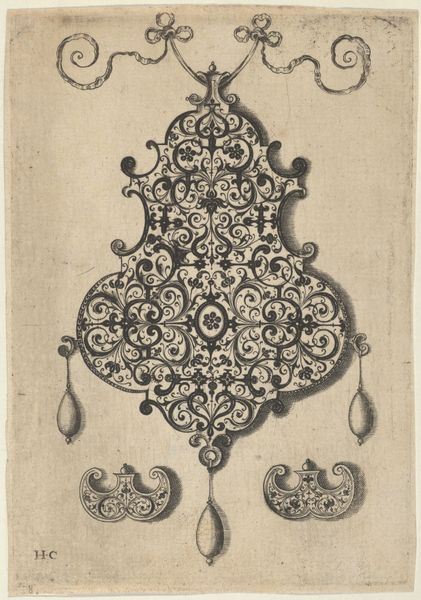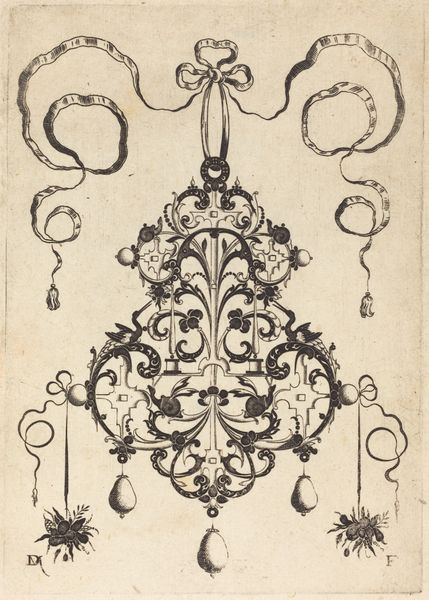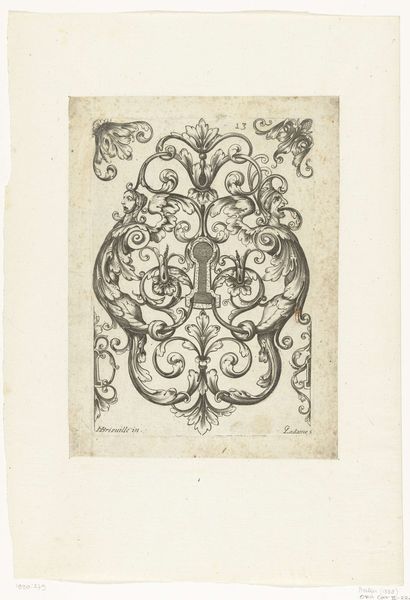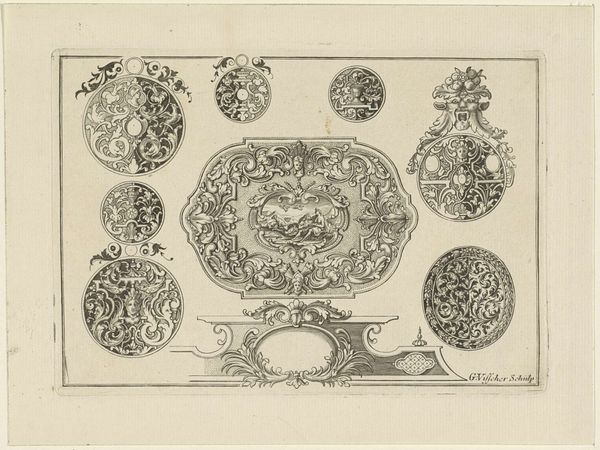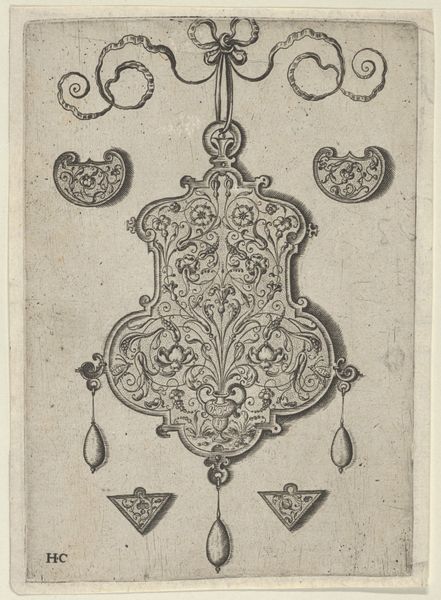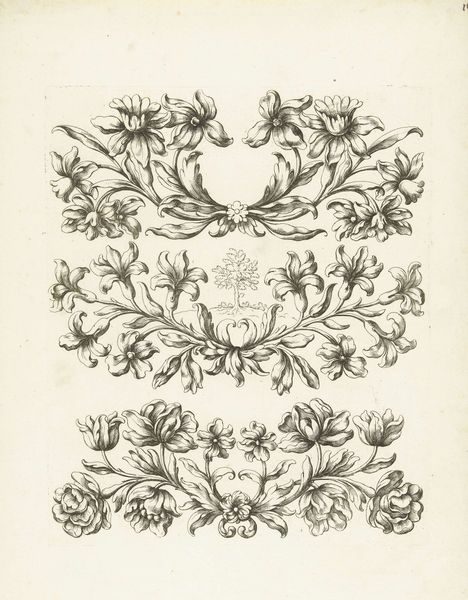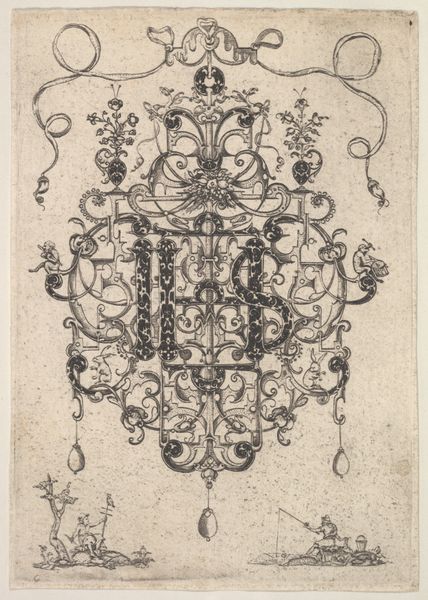
print, engraving
#
baroque
# print
#
old engraving style
#
geometric
#
line
#
decorative-art
#
engraving
Dimensions: height 212 mm, width 14 mm
Copyright: Rijks Museum: Open Domain
Curator: This engraving, dating from 1627, is entitled "Livre de toutes sortes de feuilles pour servir a l’art d’orfeburie" or "Book of all kinds of leaves to serve the art of goldsmithing," created by Jacques Briot. Editor: My first thought is, what an astonishing, almost obsessive symmetry! The shapes interlock, almost like cells viewed under a microscope, with this pearlescent glow created just from line work. Curator: Indeed, it speaks to the decorative art of the Baroque period, when the authority of the monarchy deeply influenced not only painting and sculpture, but jewelry, weaponry, and household items. Courtly art had an agenda. Editor: Looking at the composition, I’m struck by the density. The eye jumps all around, yet the repetition of form allows for harmony and elegance. It feels organic, but undeniably structured, a tension that is core to this Baroque exuberance you mention. Curator: This piece was likely used as a guide for artisans. Printed books circulated new styles widely, enabling the crown to consolidate design trends. Ornament served as a powerful marker of status, reflecting political strength. Editor: Knowing its intention allows us to interpret the piece almost as a semiotic study: a codified way of thinking through symbols that would be understood at the time. It must have been a welcome innovation in its day. Curator: Exactly. The print exemplifies the era’s cultural drive to organize and standardize forms through reproducible media, solidifying power from the top down through aesthetic authority. Editor: I agree entirely, it seems that the structure reinforces social structure and hierarchy, I appreciate being able to understand this little world in a whole new way. Curator: This engraving speaks volumes about the political context that birthed its detailed ornamentation. Editor: The more we observe, the richer the experience of a work like this becomes.
Comments
rijksmuseum about 2 years ago
⋮
Stylized naturalistic pea-pods feature in the design on both the title page and the adjacent print, making it clear why this style is called cosse de pois. It was popular in the period 1620-1640 and spread from Paris throughout Europe. Several examples of cosse de pois jewellery have been preserved.
Join the conversation
Join millions of artists and users on Artera today and experience the ultimate creative platform.

